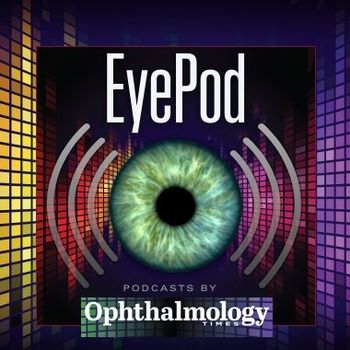
Foundation Fighting Blindness rolls out GYROS study of gyrate atrophy
According to the organization, GYROS results will help researchers design clinical trials for an emerging gyrate atrophy gene therapy.
The Foundation Fighting Blindness is launching a natural history study for people with gyrate atrophy, a rare, vision-robbing inherited retinal disease.
According to a news release,1 the lead investigators for the study are Mandeep S. Singh, MD, PhD, the Andreas C. Dracopoulos Professor of Ophthalmology and Associate Professor of Ophthalmology and Genetic Medicine at the Wilmer Eye Institute and David Valle, MD, Professor of Genetic Medicine and former director of the McKusick-Nathans Department of Genetic Medicine at Johns Hopkins University.
Singh and Valle are developing a systemically delivered gene therapy for gyrate atrophy in collaboration with Jefferson Doyle, MD, PhD, MHS, the Dracopoulos- Finkelstein Rising Professor of Ophthalmology and Assistant Professor of Ophthalmology and Genetic Medicine at the Wilmer Eye Institute.
The foundation noted the Jaeb Center for Health Research is the study sponsor and coordinating center for this study.
"We are excited to lead a world-class collaboration that's enabling the research community to better understand how gyrate atrophy affects the retina and vision in patients," said Todd Durham, PhD, senior vice president, clinical & outcomes research, at the Foundation Fighting Blindness. "GYROS results will be essential to the design and launch of the planned gene therapy clinical trial, and ultimately, getting a vision-saving treatment out to the people who need it."
Known as the Gyrate Atrophy Ocular and Systemic Study (GYROS), the $3.5 million study (NCT05312736) is informing the design of future clinical trials for gyrate atrophy.
According to the news release, several imaging and visual function tests will be performed during the study to better understand how the condition affects the retina and the rate of disease progression. GYROS will help clinical researchers identify outcome measures and participants for clinical trials of emerging therapies. GYROS will follow 45 participants with gyrate atrophy for 4 years across 12 clinical research sites from the foundation's Clinical Consortium.
The foundation noted GYROS is being funded through a collaborative effort involving 3 groups. The Foundation is providing $1.8 million in funding for GYROS.
The study is also supported by the Food and Drug Administration (FDA) of the U.S. Department of Health and Human Services (HHS) as part of a financial assistance award totaling $1.6 million. Conquering Gyrate Atrophy, a nonprofit research and advocacy organization, is contributing $100,000 to GYROS.
Karabi Acharya, ScD, Founder Conquering Gyrate Atrophy added "This is a huge step towards finding a cure for gyrate atrophy and provides hope to patients and families."
About gyrate atrophy
Gyrate atrophy is a progressive retinal disease that causes night blindness and loss of peripheral vision, in addition to severe childhood-onset myopia.1 The condition, caused by mutations in the ornithine aminotransferase (OAT) gene, is inherited in an autosomal recessive pattern.
Patients diagnosed with gyrate atrophy are unable to metabolize the amino acid ornithine (produced from its precursor, arginine) and ornithine accumulates in their plasma and tissues. Some patients diagnosed with gyrate atrophy follow an arginine-restricted (low-natural protein) diet, prescribed only by a doctor, to reduce arginine intake and slow the progression of retinal degeneration. The diet, however, is highly restrictive and difficult to follow. A gene therapy approach could help to avoid the need for restrictive dietary control and lead to better vision outcomes over the long term.
FDA/HHS Support
The project is supported by the FDA of the U.S. Department of Health and Human Services as part of a financial assistance award totaling $1.6M (46%), as well as an additional $1.9M (54%) funded by non-government source(s). The contents are those of the author(s) and do not necessarily represent the official views of, nor an endorsement by, FDA/HHS, or the U.S. Government.
Reference:
1. Blindness FF. Foundation Fighting Blindness Launches GYROS, a Natural History Study for People with Gyrate Atrophy. www.prnewswire.com. Accessed February 12, 2024. https://www.prnewswire.com/news-releases/foundation-fighting-blindness-launches-gyros-a-natural-history-study-for-people-with-gyrate-atrophy-302053804.html
Newsletter
Don’t miss out—get Ophthalmology Times updates on the latest clinical advancements and expert interviews, straight to your inbox.













































